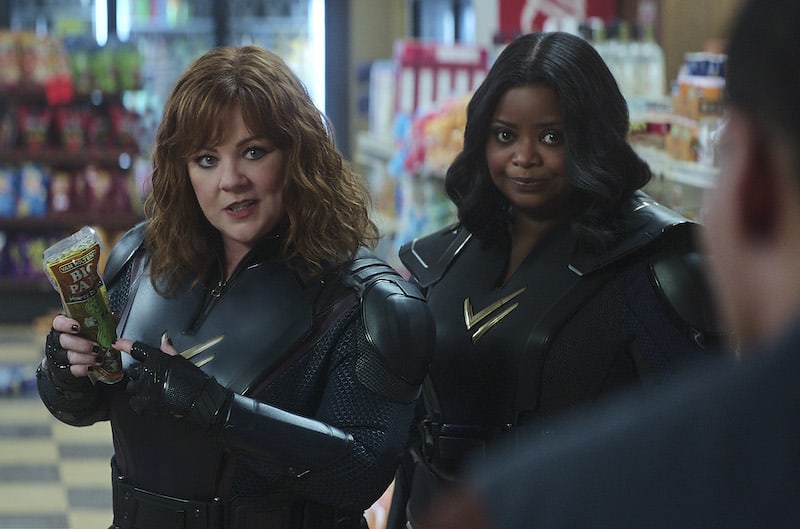#‘The Stroll’ Review: A Story of Survival, Sisterhood and Erasure Told by the Trans Women of Color Who Lived It

Table of Contents
‘The Stroll’ Review: A Story of Survival, Sisterhood and Erasure Told by the Trans Women of Color Who Lived It
There’s an eyebrow-raising moment in The Stroll — a simultaneously celebratory and elegiac documentary for HBO about the transgender sex workers that once walked New York City’s Meatpacking District — made more scathing because it involves an ostensible ally. It’s a grainy ‘80s video snippet in which RuPaul sashays down 14th Street pretending to interview what in the parlance of the day were known as “transvestite hookers,” but really making them the butt of one big condescending, classist joke.
The insensitivity of the clip is especially jarring because of the first-hand stories we’ve been hearing of the harsh reality of “the life” — of women shunned by their families, refused legal employment, subjected to violence, homelessness, racism, police harassment, brutality and repeated arrest, often by the same officers forcing them to have sex. Not to mention that trans and nonbinary people for years were shut out by gay men and lesbians from the very same rights for which they had fought on the frontlines.
The Stroll
The Bottom Line
Powerful and poignant.
But one of the captivating paradoxes of Kristen Lovell and Zackary Drucker’s lovingly assembled chapter of queer history is that while it never downplays the marginalization, persecution and physical danger of being a trans woman of color making a living through sex work, it gives equal time to the resilience, the sense of community, the proud sisterhood and shared survival skills that flourished on that block long before social justice activists were taking up the “Trans Lives Matter” cause.
“I am my own liberation,” says one of the interviewees, reflecting how they created their own resources and paved the way for the freedoms now becoming more accessible to young trans women, albeit with rights still to be won.
Lovell has a personal stake in telling this story. She ran away from home at 15 and was fired from a coffee shop job when she began transitioning. Given that regular job opportunities for trans women at the time were non-existent, she began working the Stroll — the stretch of 14th Street between 9th Avenue and the Hudson River — in 1997 and continued through 2005. After being approached to be in a documentary (2007’s Queer Streets), Lovell used that as her own segue into filmmaking, taking control of her story.
In addition to her testimony, she sits down with 11 trans women who plied their trade on the Stroll for periods ranging from 2 to 25 years. They share dark tales — of bizarre client requests; of handbags holding mace and a hammer for protection; of being assaulted and then refused treatment at St. Vincent’s Hospital; of getting arrested while merely going to the grocery store, because “walking while trans” was considered cause for questioning and trans women were automatically categorized as “drug addicts and whores.”
What unites the subjects beyond their shared experience is their refusal to speak of sex work with shame or stigma. “Sex Work is Real Work” as a protest sign reads, and these veterans of the Stroll make it clear that they deserve and demand to be treated with humanity and respect.
Anyone familiar with the post-gentrification Meatpacking District will know it was colonized by flagship stores for Stella McCartney and Alexander McQueen; by the now-defunct fashionista hub Jeffrey, an emporium so ridiculously chichi it prompted a series of SNL sketches; by the massive Apple store; by cool boutique hotels like The Gansevoort; and restaurants like Pastis and Buddakan that often popped up on Sex and the City to boost their stock as desirable destinations.
It’s hard to imagine what it was like in the earlier days before the decline of the urban meatpacking trade, when there were two or three hundred firms as opposed to the remaining handful and the overpowering stench of open meat trucks caused most people who wandered there to hold their noses. One of the interviewees, the fabulous Lady P., recalls how the backs of those trucks were often left unlocked after hours and she would take clients in there just like it was a hotel room, “to do what mother does best.”
Aside from the Black and Latina trans sex workers, pretty much the only people venturing into the neighborhood in those years were gay men going to fetish bars and underground S&M clubs. Now, even the tame gay bars are gone.
Given the shadowy film noir atmosphere of the Stroll years, footage is somewhat limited. Still, it’s surprising how much rich archival material Lovell and Drucker have found, cleverly supplementing it with fun graphics and animation. Those elements are used to illustrate what one of the regulars describes as her “Wonder Woman powers,” when there was a threat of violence. And if one of the women got into trouble, the others nearby would quickly converge to provide backup.
Some of the most eye-opening parts of the doc revisit the Rudy Giuliani years. The former mayor took his oath of office in 1994 on a platform of taking back New York’s dangerous streets. He adopted the since-debunked “broken windows theory,” equating things like sex work, graffiti and homeless encampments with serious crimes including rape and murder, positing that by cleaning up the small stuff you eventually curb the big stuff too.
This made the trans sex workers targets, especially once the affluent homeowners in the area got on board. One Giuliani-voting West Village resident, when challenged that prostitution is a victimless crime, responds, “No, no, we were the victims.”
When Michael Bloomberg succeeded Giuliani as mayor in 2002, the Stroll was already disappearing, with the police tape across 14th Street following 9/11 having caused things to go quiet for two or three years. Many of the women who depended on the area for work found they had no way to survive; others had to learn to adapt, taking their business online, often with zero computer skills.
Putting all his weight behind economic growth and real estate development, Bloomberg accelerated gentrification of the city, perhaps nowhere more abruptly than the Meatpacking District. To clear the streets of sex workers and drug addicts, he introduced Operation Spotlight, a “three strikes” rule, meaning that offenders after a third arrest could be sent to upstate New York prisons with harsher sentences. One woman describes being released after 12 years and finding the community had vanished and lots of girls she knew from the Stroll had died.
These accounts make the history that the filmmakers have gathered all the more vital. Considerable attention is given to pioneering trans activist Sylvia Rivera (Lovell worked at her Hell’s Kitchen safe space for 10 years), who founded STAR, Street Transvestite Action Revolutionaries, with another legendary figure, Marsha P. Johnson. (Perhaps because Johnson was the subject of a comprehensive David France doc in 2017, she’s mentioned only fleetingly here.)
STAR was a direct response to the murder in 2000 of Amanda Milan, a sex worker from the Stroll who was stabbed near the Port Authority Bus Terminal, bled out and died in the street, with no one coming to her aid. The filmmakers make the sad observation that while Bill Clinton had drawn attention to the vicious killing of Matthew Shepard less than two years earlier, galvanizing people’s anger about homophobic hate crimes, Milan’s murder was largely ignored, with only her sisters from the Stroll at the funeral.
The doc acknowledges that progress has been made in terms of trans visibility and sex worker rights, with many former Stroll regulars now holding jobs in trans social justice or human rights organizations, legal services and anti-street violence groups. Their survival is a badge of honor. But Lovell and Drucker’s film — winner of a Special Jury Award at Sundance — also makes rueful acknowledgement that the story of New York is one of constant marginalization, of people being pushed out of spaces where once they were part of a thriving community.
If you liked the article, do not forget to share it with your friends. Follow us on Google News too, click on the star and choose us from your favorites.
For forums sites go to Forum.BuradaBiliyorum.Com
If you want to read more Like this articles, you can visit our Social Media category.



